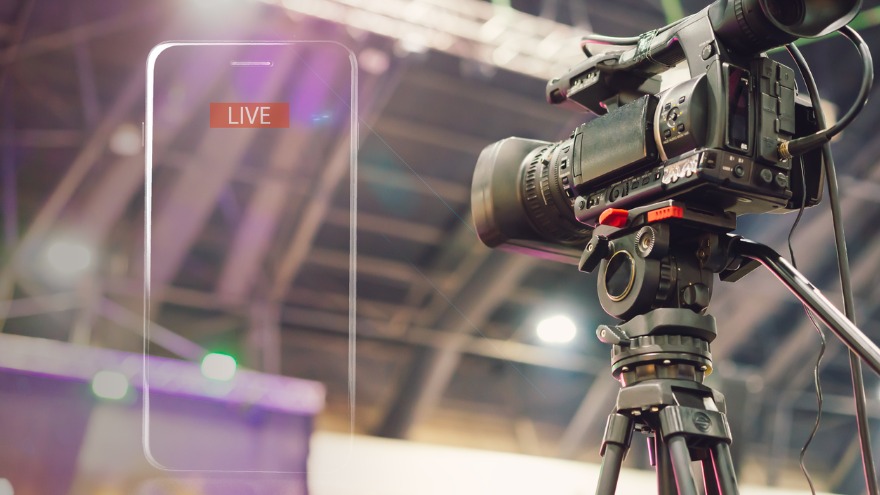One of the positives that came out of the last 18 months is the ability to reach a broader audience through livestreaming. Even as events are coming back and in-person audiences are gathering around the world, a virtual component will forever be a way to add value to your event and to your attendees.
However, the bar has been raised as audiences no longer settle for cheap solutions or second-rate platforms. Businesses are competing to create the most memorable experience for a virtual audience, treating them with the same level of thoughtfulness as they would an in-person audience.
Here are the seven biggest challenges planners face when producing a livestreamed event, and creative solutions.
1. Quality
One of the most obvious challenges (and easiest to tackle) when producing a livestream for your event is the actual quality of the stream. This includes the quality of the audio as well as the image and is absolutely crucial to a great event and audience experience. If you want to resolve this, the easiest and most effective way is to invest in high-level production. This ensures broadcast-quality content as well as smooth transitions—an investment worth your time and resources.
See also: How to Bring Live Event Production Value to Your Virtual Audience
2. Internet
Another big challenge to creating a successful livestream event is dubious internet quality. Without the proper internet infrastructure, your audience is left with a spotty stream, or worse, no content at all. The best way to solve this is to invest in backup internet. This means that if the first Wi-Fi system goes down, you can count on the alternate system to pick up the stream without a single drop in the programming.
3. Content
If you’re building an event from the ground up, content really IS king. One of the biggest challenges during a livestreamed event is making sure the content you’re producing stays relevant to your audience. If it isn’t relevant and intriguing, your audience will tune out, especially in the online environment. The easiest way to solve this is to (drum roll…) ask! Sometimes, the best way to gauge your attendees’ interests is to ask what they are hoping to see/hear. This can be accomplished in a pre-conference poll, or during data collection throughout the year.
More: Producing Compelling Content that Drives Engagement
4. Live vs. Pre-recorded
Another decision you will have to make is whether to go completely live or add in pre-recorded content. Often, event professionals choose a blended approach. With all live content, there is the benefit of immediate audience engagement, but the con of this route is the lack of editing and rehearsals. For pre-recorded content, a huge advantage is the opportunity to schedule this when it is easiest for your speaker. However, it does limit real-time updates. With so many pros and cons, why choose? The best events have a combination of live and pre-recorded content to create a seamless event experience. When pre-record is done correctly, your audience won’t even notice.
5. Branding
In order to build a great event (and see an actual ROI), you need to ensure your attendees know that it’s yours. One of the biggest challenges planners face when delivering a livestream experience is making sure it’s customized, unique and authentic. When you host a livestream event on Zoom or Google Teams, it feels tired and basic. The easiest solution? Create a fully-branded livestream. This means custom lower-thirds, custom background graphics and transition content that embodies your organization’s values and guidelines.
6. Connecting the Two Audiences
One of the biggest challenges when hosting a livestream event is finding meaningful ways to connect the in-person audience and the virtual audience. The best way to bridge these two sections is by using an event host. Think Oscar or Emmy style, and how crucial hosts can be in delivering messages between the two audiences at home and in the venue. The host helps the audience navigate the event, and helps attendees understand what to expect and how to engage. Especially in this new world of virtual events, a host for your livestream will help keep your attendees engaged and will help them get the most from the experience.
7. Engagement
We’ve all been there—another bland livestream—woof! Engaging your audiences in a meaningful way, is incredibly challenging when creating a livestreamed event. There are a few solutions to this, one being live audience Q&A sessions. This can be accomplished by ‘beaming in’ attendees from the virtual audience and having them chat live with the event’s host or keynote. This solution facilitates authentic engagement without the fluff.
Ashley Hawks is vice president of sales with EideCom and host of the podcast Meeting Minds.




